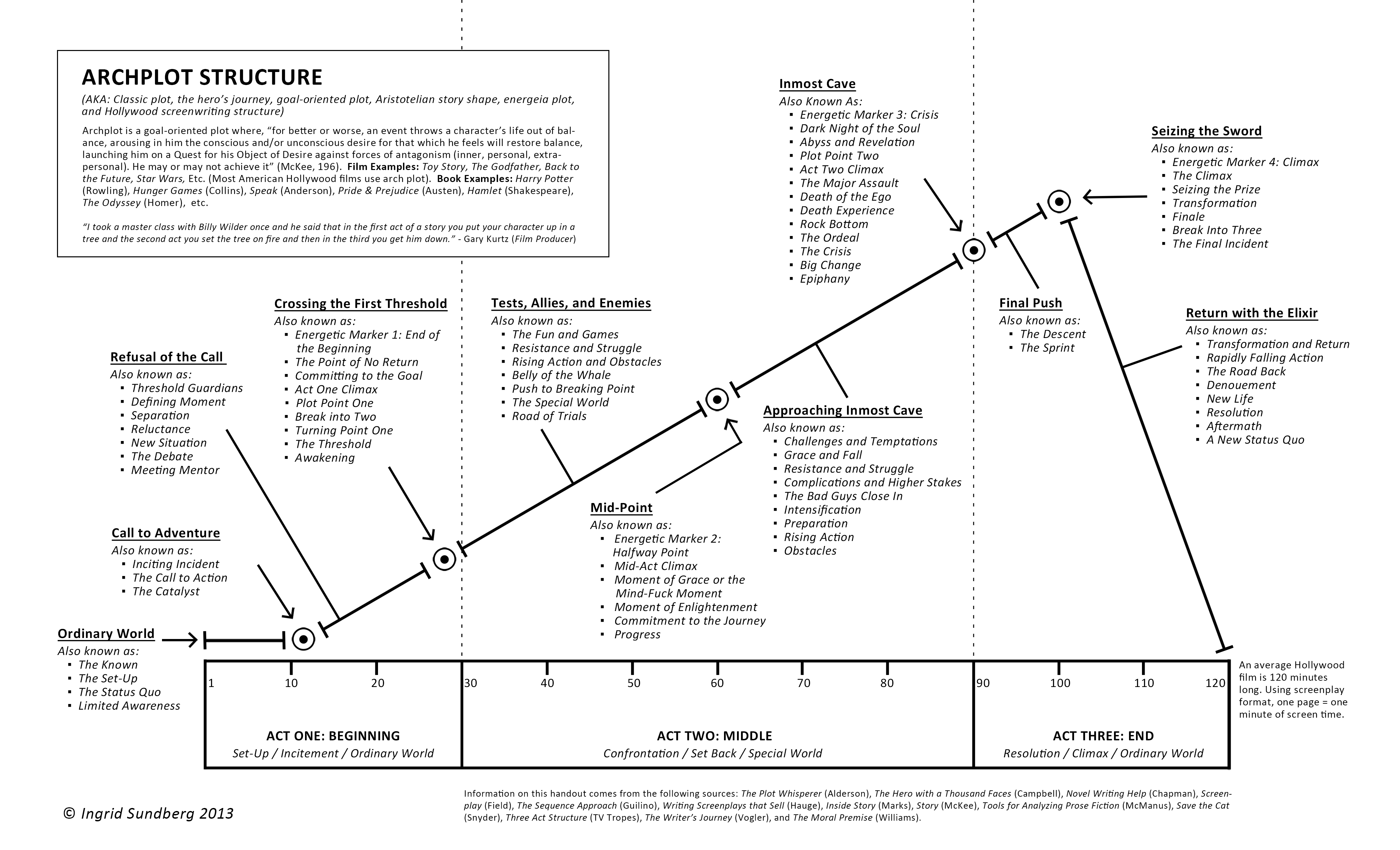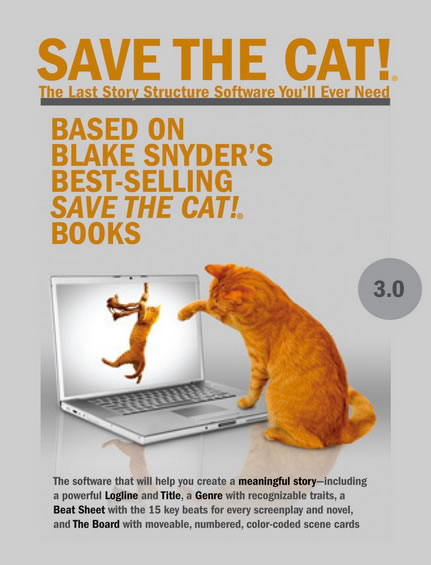 This is the seventh article in the Spring Cleaning series, in which I’m going through the rough drafts of blog posts that have languished in the “storage” for far too long, finishing them, and finally posting them. In case you missed any of the previous six, I’ve listed them below:
This is the seventh article in the Spring Cleaning series, in which I’m going through the rough drafts of blog posts that have languished in the “storage” for far too long, finishing them, and finally posting them. In case you missed any of the previous six, I’ve listed them below:
- Burgers. Burgers everywhere.
- Which beer is most likely to land you in the emergency room?
- Weber Cooks, the saddest cooking show
- Get on your bicycle!
- Fireworks and sensitive body parts
- Work!
In this latest installment, I look at Save the Cat, a book that shoulders a fair bit of the blame for why many big Hollywood movies seem to have the same “feel”.
The Hero’s Journey

“There are only two or three human stories, and they go on repeating themselves as fiercely as if they had never happened before.” — Willa Cather
If you tell stories, whether as a writer of books, an essayist, a blogger, a presenter, or even just as someone entertaining friends at your local pub, coffee shop, or living room, you should have at least a passing knowledge of the elements of good storytelling. One concept that you’ve probably already internalized without knowing is the monomyth, or Hero’s Journey, a pattern of storytelling described by American mythologist Joseph Campbell in his book, The Hero with a Thousand Faces. As a student of myths and narratives from around the world, Campbell kept noticing a pattern appearing and re-appearing in stories, and extracted the theory of the Hero’s Journey from them.
The Hero with a Thousand Faces is worthwhile reading, but if you’ve only got five minutes and change to spare, here’s a nice, funny, puppet-filled summary by Glove and Boots that explains the Hero’s Journey, shows you where you’ve seen it before, and as a bonus, explains why Adam Sandler films aren’t what they used to be:
As I mentioned earlier, the theory of the monomyth is a storytelling convention, derived from observations of millennia of storytelling, from the Epic of Gilgamesh (which includes a story similar to Deucalion’s Flood and Noah and the ark) to Gone With the Wind.
(In case you’re not familiar with the Epic of Gilgamesh, here it is, in animated form!)
The stories came first, the theory of the Hero’s Journey came second. But what if someone decided to reverse things and put the cart in front of the horse?
The Book
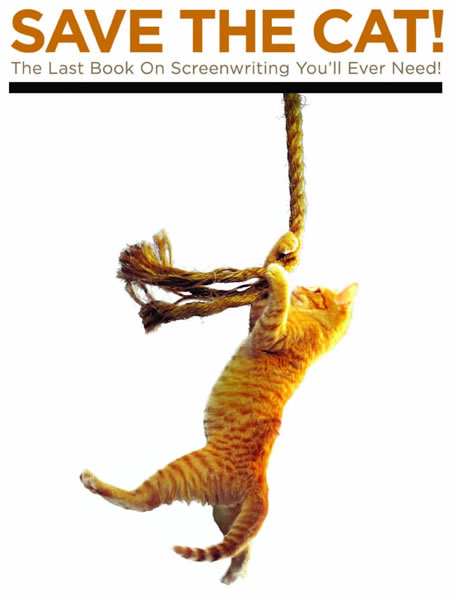
If Hollywood movies have seemed increasingly formulaic and similar to you — perhaps you noticed that Skyfall, The Avengers, and Star Trek: Into Darkness all featured an eloquent villain with a non-American accent who was a former ally and whose evil plot required getting caught by the good guys on purpose — give yourself a pat on the back. Many of them are following a formula: the formula spelled out in Save the Cat: The Last Book on Screenwriting You’ll Ever Need.
I stumbled across a copy of Save the Cat in an Ottawa bookstore back in the summer of 2011. I thumbed through it and soon found myself taking a seat as I continued reading. Before I knew it, I’d gone through the entire book. It was a fascinating read, because it described just about every Hollywood movie I’d recently seen or friends had been raving about.
A diagram of the three-act structure, with lots of Hero’s Journey stuff thrown in. Click to see it at full size.
It should cause you some concern that the best-known movie by Blake Snyder, Save the Cat’s author, is the terrible Syvester Stallone/Estelle Getty vehicle: Stop or My Mom Will Shoot.
Save the Cat build upon the Hollywood staple known as the three-act structure of setup, confrontation, and resolution and expands upon it, listing 15 “beats”, each one being key event in the film that drives the story forward. Not only is there a specified order of appearance and name for each beat, such as “Catalyst”, “Debate”, “Fun and Games”, and “Dark Night of the Soul”, there are even specified screenplay page numbers for each beat. The convention is for a page of script to represent a minute of movie time, so Save the Cat isn’t just a formula, it’s a formula that specifies movies down to the minute.
Save the Cat gets its name from one of one of the first things you need to do in its formula: make the audience sympathetic to the main character. You want your audience to know that this person’s worth rooting for, and since the rule is “show, don’t tell”, you need the protagonist to do something to make the audience like him or her. It’s usually a decent, noble, kind act, such as…well, saving a cat. Here’s a YouTube video featuring a handful of “save the cat” moments from Aladdin, Sea of Love, Heist, and Raiders of the Lost Ark:
Save the Cat’s Beats in Frozen
Let’s take a look the Save the Cat set of beats, applied to a recent megahit: Frozen. I got the list of beats and their definitions from Tim Stout’s blog, while the “beat sheet” for Frozen comes from the official Save the Cat site.
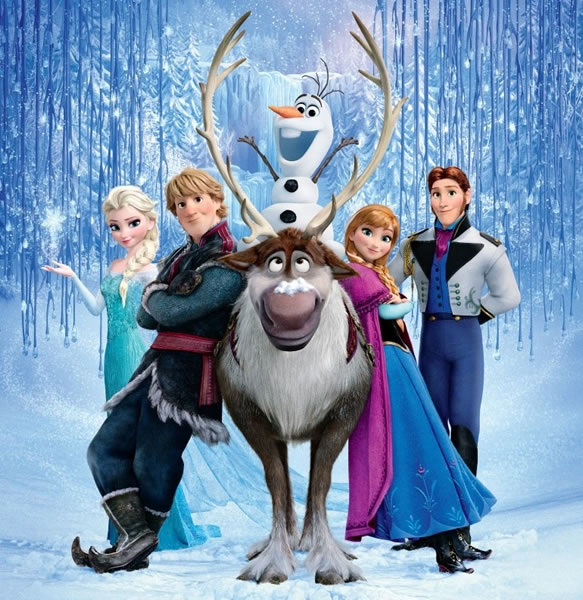
Opening Image – A visual that represents the struggle & tone of the story. A snapshot of the main character’s problem, before the adventure begins:
A single snowflake drifts through the sky, its crystals developing into a unique shape, followed by more snowflakes doing the same. As the title lingers on the screen, it quickly fades to an image from the perspective of under the ice as men saw through it.
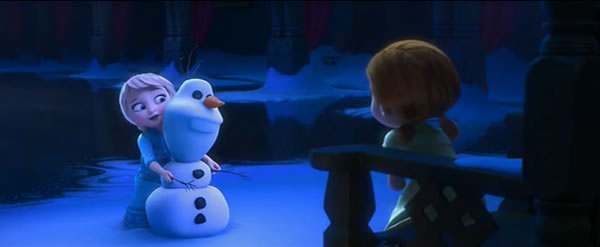
Set-up – Expand on the “before” snapshot. Present the main character’s world as it is, and what is missing in their life:
In the Kingdom of Arendelle, Anna (voice, Kristen Bell) and her older sister Elsa (voice, Idina Menzel) play together, living a life with a happy childhood. Anna wakes Elsa up, asking her if they can build a snowman. While Anna is a normal child, Elsa is anything but: she has been born with the power to create ice and snow from her hands, and she can manipulate it at will. The girls play in a giant room in the castle, with Elsa creating huge mounds of snow for Anna to slide down and hop across. They continue to giggle and play until Elsa starts to lose some control of her abilities, and she accidentally hits Anna in the head with her powers, knocking her unconscious.
Strands of Anna’s hair are turned white, and their parents rush her to a group of mountain trolls. The troll elder is able to save Anna just in time, but he cautions the king and queen to shield Anna from Elsa’s powers to prevent another accident. He alters the memories Anna has of Elsa’s powers, making her forget the uniqueness her sister possesses.
Anna and Elsa grow up in the same household, yet totally separated from each other in an effort to protect Anna. Anna can’t understand why her sister won’t play with her anymore, coming to her door and continually pleading with her to build a snowman like they used to. As they grow in age, their father cautions Elsa to wear gloves to prevent her powers from manifesting; they must remain a secret from everyone. “Conceal; don’t feel,” he tells her.
Eventually, their parents are lost at sea, and Anna is lonelier than ever before. She longs for a time when she can interact with the world outside.
Theme Stated (happens during the Set-up) – What your story is about; the message, the truth. Usually, it is spoken to the main character or in their presence, but they don’t understand the truth…not until they have some personal experience and context to support it:
As the troll elder heals Anna, he tells the king and queen that they are lucky the magic did not hit her heart. “The heart is not so easily changed, but the head can be persuaded,” he tells them. He then addresses Elsa, saying that her powers can be something of great beauty, but she must learn to control them, and that fear will be her greatest enemy. This bit of foreshadowing will be the focus of the story: Anna will need to learn what it truly means to love, and Elsa will be the key to all of this.
Catalyst – The moment where life as it is changes. It is the telegram, the act of catching your loved-one cheating, allowing a monster onboard the ship, meeting the true love of your life, etc. The “before” world is no more, change is underway:
As Elsa comes of age and is heir to the throne, the time for her coronation is at hand. “For the first time in forever,” as Anna sings, the kingdom is actually open. For Anna, this is a joyous occasion, as she will have the opportunity to interact with the world outside. For Elsa, this is yet another time of fear for her, as she must control her abilities.
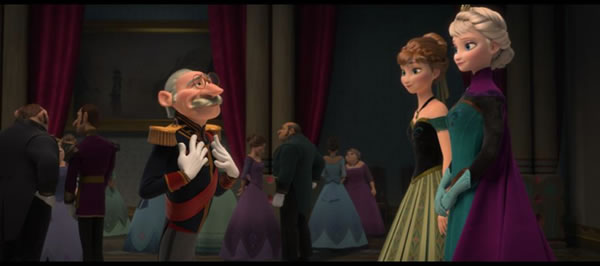
Debate – But change is scary and for a moment, or a brief number of moments, the main character doubts the journey they must take. Can I face this challenge? Do I have what it takes? Should I go at all? It is the last chance for the hero to chicken out:
As the castle walls fill with guests, both girls wonder what this will mean for them and for their future. The Duke of Weselton arrives and is eager to trade with Arendelle, suspicious about why the kingdom’s walls have been closed for so long.
Anna is eager to meet “the one” to share her life with, while Elsa is afraid of what might happen if she cannot control her powers. Can she harness them for this one day? Will her sister still love her? Will the subjects of the kingdom accept her or see her as a monster if something goes wrong?
Elsa is able to control her abilities when she takes off her gloves at the ceremony, but the day is not over yet. After the ceremony, she and Anna speak to each other for the first time in years, beginning to rekindle their love. While Elsa is still apprehensive about any social interaction, Anna meets a young prince named Hans, the youngest of 13 brothers. As the day passes, Anna falls more and more in love with him, ultimately accepting his proposal of marriage. When the two go to ask for Elsa’s blessing, Anna is angry when Elsa does not give it. She lashes out at her sister, unable to understand why Elsa doesn’t want her to be happy.
In a slip of her emotions, Elsa unleashes her powers in front of everyone at the ball. Fear fills the room, which only causes things to get worse for her. She flees as Anna watches in shock, their world turning into an icy wasteland in a matter of minutes. The Duke of Weselton wants to hunt her down, accusing her of sorcery and of being a monster, but Anna has another plan.
Break Into Two (Choosing Act Two) – The main character makes a choice and the journey begins. We leave the “Thesis” world and enter the upside-down, opposite world of Act Two:
Anna goes after Elsa, leaving Prince Hans in charge of her kingdom while she is gone. She must leave her familiar life of safety and isolation and step out into the upside-down world of the frozen outdoors.
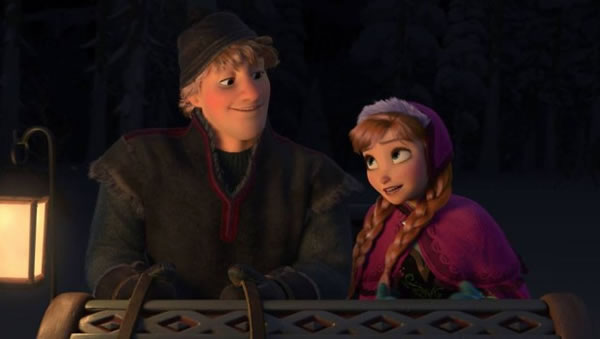
B Story – This is when there’s a discussion about the Theme – the nugget of truth. Usually, this discussion is between the main character and the love interest. So, the B Story is usually called the “love story”:
While Anna attempts to cope with the freezing cold, her horse runs off, and she stumbles upon a small trading post and enters it, where she also meets Kristoff (voice, Jonathan Groff), who sells ice for a living.
Fun and Games, a.k.a. The Promise of the Premise – The entertaining aspects of the story’s premise are explored (in scenes that might make the movie trailer) – highlighting the main character’s unlikeliness for this “upside down world – which are fun to watch, but NOT fun for the main character, who is essentially in HELL until the end of the story:
At the trading post, Anna is able to find some winter clothes, but Kristoff has an argument with the owner and is thrown out. Anna bands together with him, needing his help on her journey.
Meanwhile, Elsa has found refuge and has used her powers — for the first time without repercussions — to create a magnificent ice palace. It is the only time she has ever felt truly free and uninhibited. She can embrace her abilities, seeing them as something wonderful rather than as a curse.
Anna, along with Kristoff and his reindeer Sven, journey up the mountain. Kristoff questions her future marriage to Hans, but they are soon attacked by a pack of wolves. Further on, they encounter a jovial talking snowman, Olaf (voice, Josh Gad), who is eerily similar to one that Anna remembers Elsa making in their childhood. Olaf joins them, singing about how he desires to see summer weather, not knowing what this would entail for him. But Olaf’s appearance is an indicator that they are close to finding Elsa. He leads them to Elsa’s ice palace, while back at the kingdom, Anna’s horse returns without her, and Hans recruits some men to go and confront the queen.
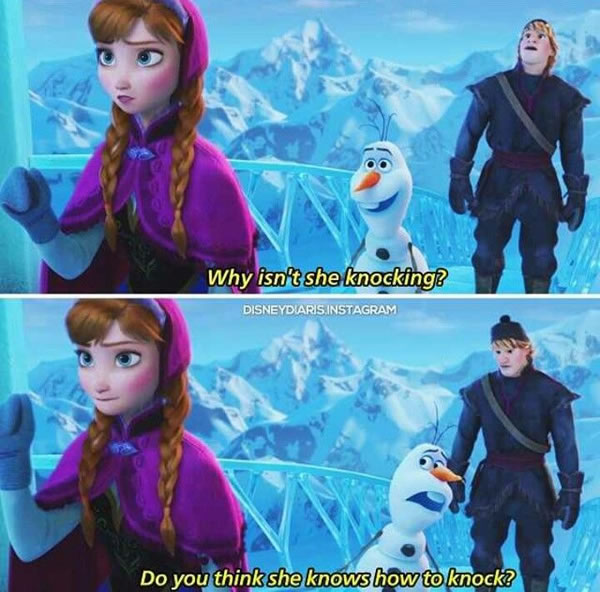
Midpoint – Dependent upon the story, this moment is when everything is “great” or everything is “awful”. The main character either gets everything they think they want (“great”) or doesn’t get what they think they want at all (“awful”). But not everything we think we want is what we actually need in the end:
Arriving at Elsa’s ice palace, Anna marvels at what her sister could create. She finds Elsa inside and pleads with her to return, claiming that together, they can solve the problem. Elsa refuses, relishing her freedom, but Anna tells her that her actions have caused a winter condition that only Elsa can reverse. The stakes have been raised, and only get higher when Elsa begs her sister to leave, accidentally hitting her in the heart with an icy blast. This brings the theme forward in a literal way. Anna doesn’t realize it at first, but if she doesn’t find help soon, her heart will freeze, killing her.
Bad Guys Close In – Doubt, jealousy, fear, foes both physical and emotional regroup to defeat the main character’s goal, and the main character’s “great”/“awful” situation disintegrates:
Elsa kicks Anna and Kristoff out of her ice palace, creating a huge ice creature to chase them off. Anna and Kristoff are pursued by it until they fall off the mountain to the snow drift below. When Kristoff realizes that Anna’s hair is turning white from the blast to her heart, he races her to the only ones he knows who can help: the trolls that raised him, the same ones who had saved Anna once before, to which he was a witness. The trolls believe that Anna and Kristoff are in love, although they both deny it. They hint at the theme, singing that sometimes people do things out of fear that they would not otherwise do, and that love will help show them the way.
The elder troll comes forward and says that there is nothing he can do to heal Anna; only an act of true love can heal a frozen heart. Anna realizes this must mean “true love’s first kiss” from Hans, and Kristoff races her back to Arendelle.
Meanwhile, Hans and his band of men have arrived at Elsa’s ice palace, only to confront the snow creature and fight it. The Duke of Weselton’s men storm the palace and attack Elsa, causing her to unleash the full brunt of her powers, almost killing them in the process. During the battle, she is knocked out and awakens in a prison cell back at the castle, her hands manacled by iron. Hans tells her that Anna hasn’t returned, and Elsa despairs.
Kristoff arrives at the castle gates, leaving Anna in the care of her staff to bring her to Hans for a kiss. When Hans arrives and Anna tells him this, he reveals his true nature; he was merely using her to obtain the throne.
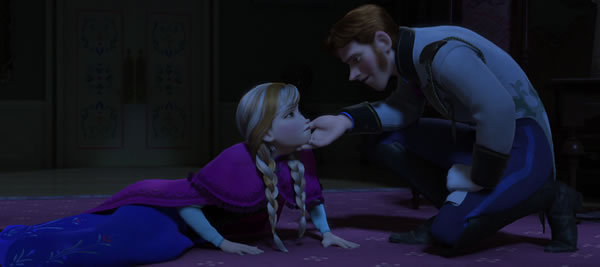
All is Lost – The opposite moment from the Midpoint: “awful”/“great”. The moment that the main character realizes they’ve lost everything they gained, or everything they now have has no meaning. The initial goal now looks even more impossible than before. And here, something or someone dies. It can be physical or emotional, but the death of something old makes way for something new to be born:
Hans leaves Anna in a cold room to die, then informs the staff that Anna is dead, and lies as he declares that they had said their marriage vows. Assuming the position of the throne, he charges Elsa with treason and sentences her to death. The whiff of death is in the air for both Anna and Elsa.
Dark Night of the Soul – The main character hits bottom, and wallows in hopelessness. The Why hast thou forsaken me, Lord? moment. Mourning the loss of what has “died” – the dream, the goal, the mentor character, the love of your life, etc. But, you must fall completely before you can pick yourself back up and try again:
As Anna struggles to stay alive, Olaf appears and kindles a fire to help her. He muses about how much Kristoff helped her, and as he looks out the window into the distance, he sees Kristoff racing back toward Arendelle. Anna then realizes that it is Kristoff, not Hans, who can give her “true love’s first kiss” and save her.
Break Into Three (Choosing Act Three) – Thanks to a fresh idea, new inspiration, or last-minute Thematic advice from the B Story (usually the love interest), the main character chooses to try again:
Anna and Olaf attempt to make it out of the castle to meet Kristoff, who is racing toward Arendelle and the swirling vortex of snow and ice that envelops it.
Finale – This time around, the main character incorporates the Theme – the nugget of truth that now makes sense to them – into their fight for the goal because they have experience from the A Story and context from the B Story. Act Three is about Synthesis:
Anna and Olaf find a way out of the castle and step onto the icy fjord, her heart freezing more and more by the minute. As Kristoff races toward her, Hans finds Elsa alone on the ice, telling her that Anna has died as a result of her inability to control her powers. Anna sees Kristoff getting closer, but then spies Hans raise a sword from behind Elsa, ready to kill. Digging down deep, Anna leaps in front of the sword, freezing into solid ice right as Hans slices downward, his sword shattering upon impact.
Elsa sees what her powers have wrought and despairs, realizing the sacrifice Anna made for her. It is at this moment that Anna begins to thaw; the act of true love had come from within, healing her frozen heart. Elsa realizes that love conquers fear, and she soon embraces this as a way to balance her abilities.
Final Image – opposite of Opening Image, proving, visually, that a change has occurred within the character:
As the kingdom returns back to normal, Elsa sees her powers as a beautiful gift, not as a curse. Hans is returned to his own land, and the Duke of Weselton is forever banished from Arendelle. Elsa vows to Anna that they will never close the gates of the kingdom again and proceeds to use her abilities to inspire awe in the townsfolk, creating a winter wonderland in the palace courtyard.
Love has conquered all; it has healed a frozen heart and has reunited the two sisters once again.
More examples: Back to the Future and E.T.: The Extraterrestrial
If you’d like to see more examples of the Save the Cat structure applied to movies, MediaJuice put together a couple of ten-minute videos. Here’s their Save the Cat breakdown of Back to the Future:
and here’s their Save the Cat-ization of E.T.:
There’s even software
If following an outline from a book seems too much like work, worry not: there’s even Save the Cat software to take some of that burden away…
If you’d like to see the software in action, here’s a series of YouTube videos that walk you through version 3 of the Windows edition software (it’s also available for the Mac):
If you find working on a desktop or even a laptop too confining, there’s even an iPhone version of Save the Cat, which sells for $20. Want to try before you buy? There’s a Lite version that’s available for free.
Did Save the Cat ruin Hollywood films?
I’m sure that a good writer can do wonders following the Save the Cat formula, and that a great one has probably internalized the general idea about it: enchanting audiences with an engaging story. However, as a crutch, it’s led to a lot of movie feeling the same, a trend that’s reinforced by the need to not only recoup the money spent in making a film, but to actually show some profit. There’s strong pressure to play it safe and stick with what works, and while Save the Cat has been proven to work. Chris Keelty makes a good point in this YouTube video, On Story Structure (and how Save the Cat ruined Hollywood):
Want to find out more about Save the Cat? Check out this Salon article: Save the Movie!
And here’s an interview with Save the Cat‘s author, Blake Snyder:
